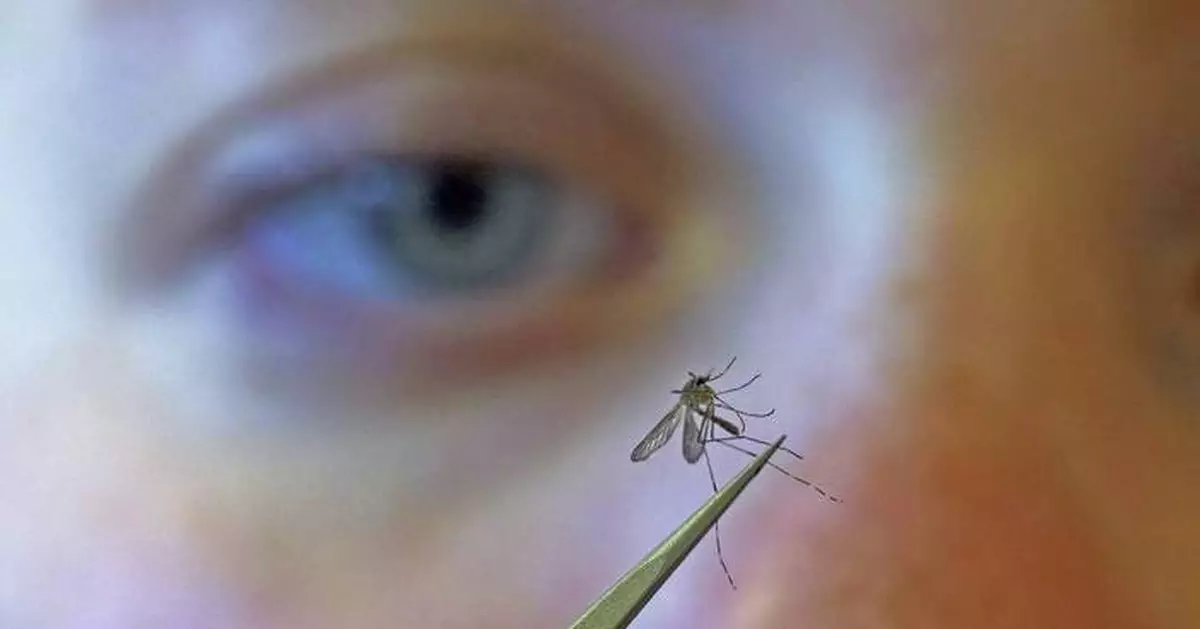The world's deadliest animal can be squashed flat with a quick slap: It's the mosquito.
The buzzing insects are more than annoying — they spread disease. When they bite and drink blood from a person or animal they can pick up viruses or germs too. If they can go on to bite someone or something else, they deposit the germ right under the skin.
People in some areas of Massachusetts have been warned to stay indoors when mosquitoes are most active after a rare case of eastern equine encephalitis was discovered. And Dr. Anthony Fauci, the former top U.S. infectious disease expert, was recently hospitalized after he came down with West Nile virus.
Both are nasty diseases spread by mosquitoes — though thankfully they are relatively rare.
The best way to avoid getting sick is of course to avoid getting bitten, which means taking steps like using repellent, wearing clothing with long sleeves and long pants and staying indoors when the mosquitoes are out. Local health departments also work to reduce mosquito numbers, including spraying neighborhoods with insecticide. Authorities in Massachusetts are using trucks and planes this week to spray vulnerable areas.
Here's a look at some common — and not so common — mosquito-borne diseases.
Most people infected with eastern equine encephalitis don't develop symptoms, but some can come down with fever or swelling of the brain and about one third of people infected die. There have been three cases of eastern equine encephalitis in the U.S. this year, according to the U.S. Centers for Disease Control and Prevention, one each in Massachusetts, New Jersey, and Vermont. The worst year for the disease was 2019, with 38 cases. It is caused by a virus and is not very common around the world. The virus typically spreads in certain swamps, including red maple and white cedar swamps in Massachusetts.
About 2 in 10 people infected with West Nile virus develop symptoms, which can include fever and swelling of the brain. About 1 in 10 people who develop severe symptoms die. There have been 216 West Nile cases so far this year. West Nile virus was first reported in the U.S. in 1999 in New York. It gradually spread across the country. In 2003, there were nearly 10,000 cases.
Malaria infected nearly 250 million people globally in 2022 and killed more than 600,000, mostly children. It is caused by a parasite carried by mosquitoes and mainly infects people in tropical regions, especially Africa. A vaccination campaign has been launched in recent months that health officials hope will help reduce cases and deaths.
Also known as “break-bone fever” because it can be so painful, dengue is becoming more common. The World Health Organization says that about half the world's population is at risk of getting the disease, and there are 100 million to 400 million infections every year. Not everyone gets symptoms, which can include fever, severe headaches and pain in the muscles and joints. Most U.S. cases are in people who have traveled to other countries, though the CDC says there have been about 2,600 locally acquired cases so far this year.
The Associated Press Health and Science Department receives support from the Howard Hughes Medical Institute’s Science and Educational Media Group. The AP is solely responsible for all content.
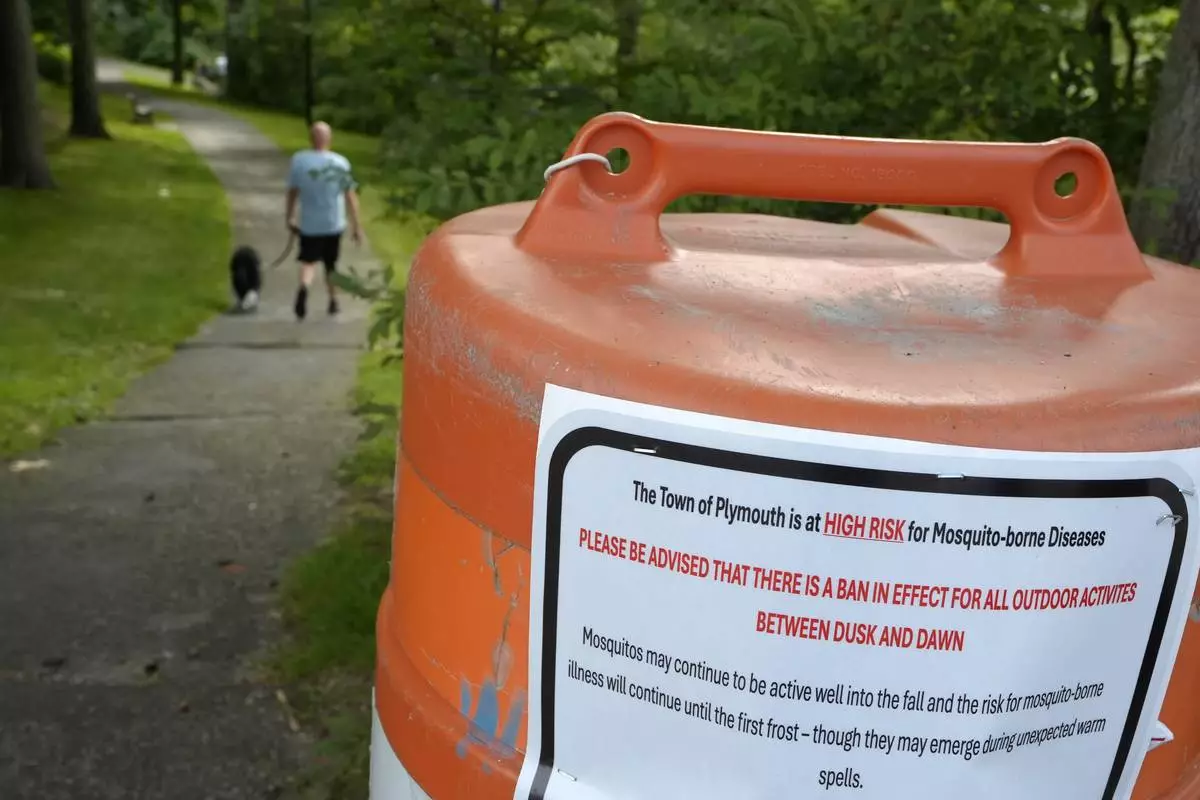
A passer-by walks a dog, Monday, Aug. 26, 2024, along a walkway, in Plymouth, Mass., near a sign that advises people of a ban in effect for outdoor activity between dusk and dawn due to the risk of exposure to mosquito-borne diseases. (AP Photo/Steven Senne)
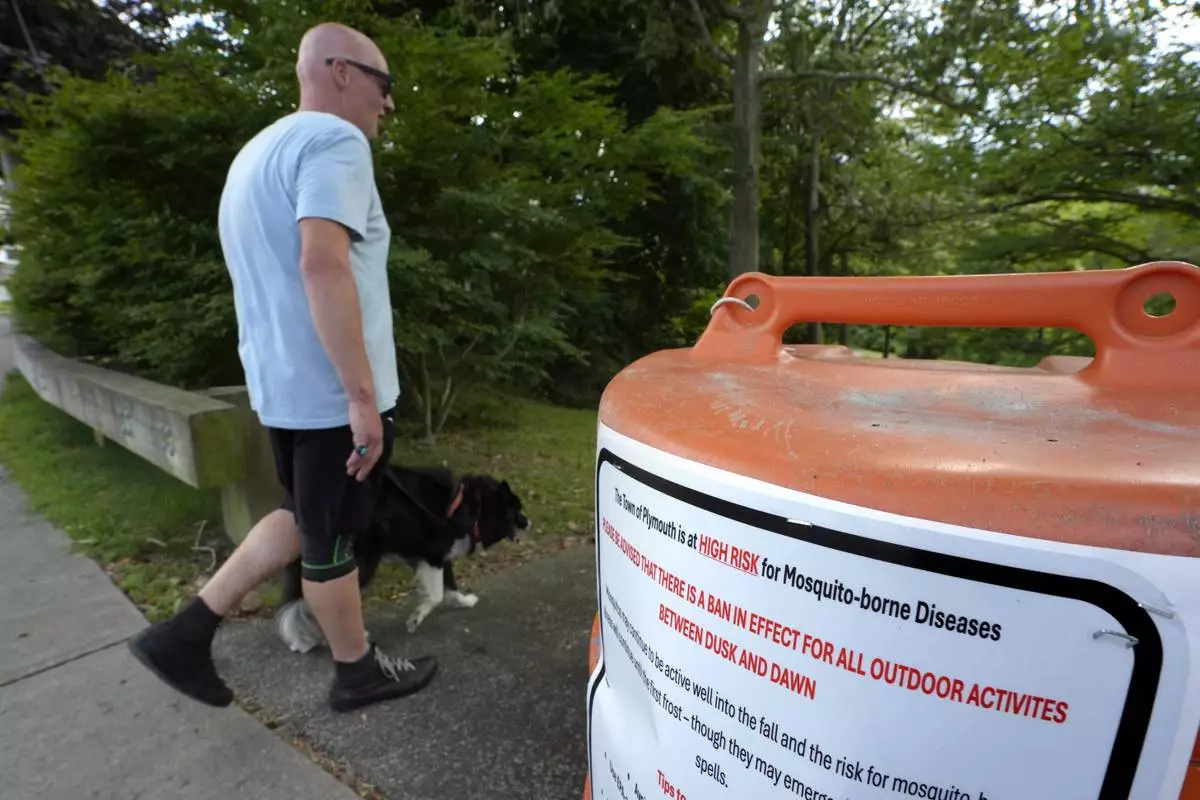
A passer-by walks a dog, Monday, Aug. 26, 2024, while entering a walkway, in Plymouth, Mass., near a sign that advises people of a ban in effect for outdoor activity between dusk and dawn due to the risk of exposure to mosquito-borne diseases. (AP Photo/Steven Senne)
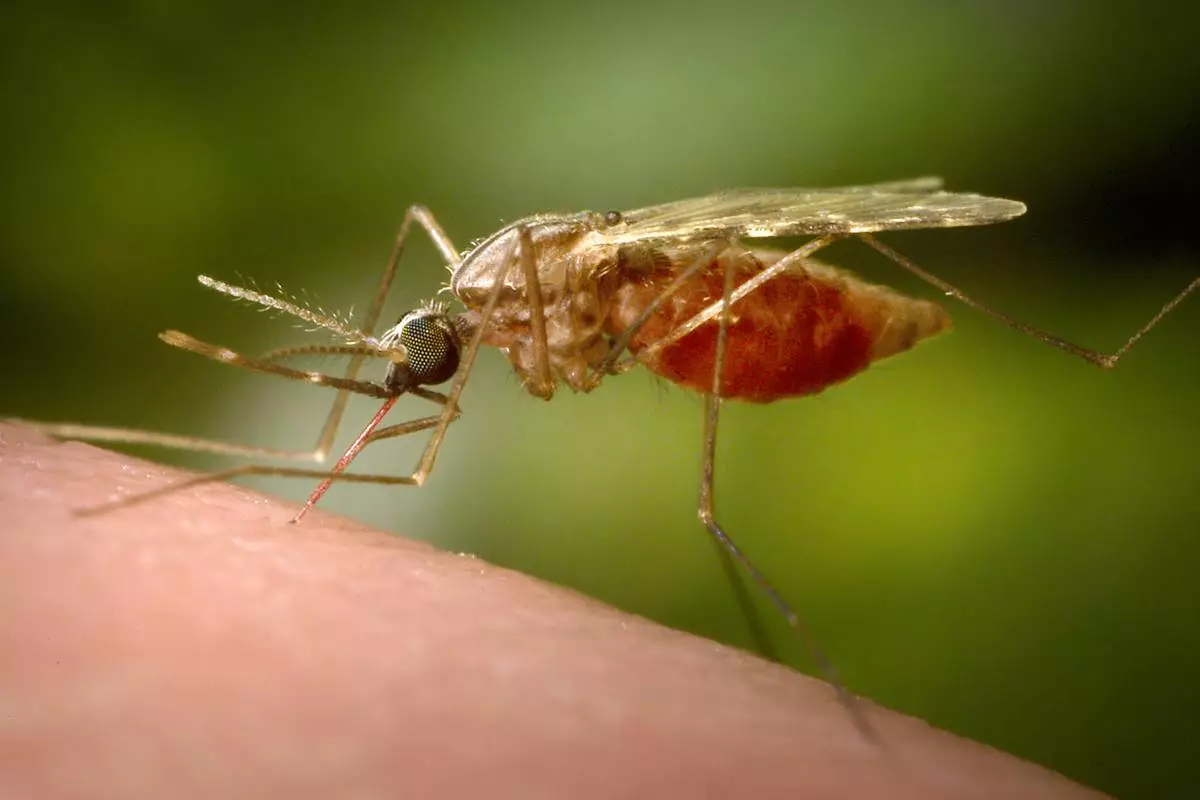
This 2014 photo made available by the U.S. Centers for Disease Control and Prevention shows a feeding female Anopheles funestus mosquito. (James Gathany/CDC via AP)
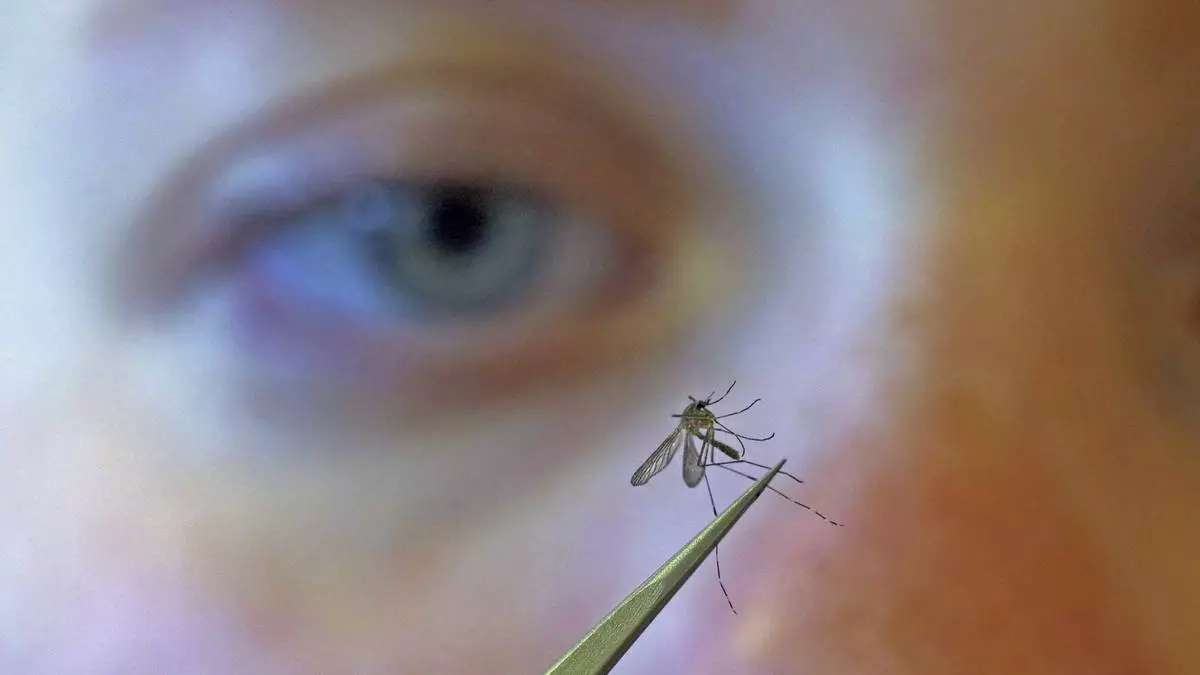
FILE - In this Aug. 26, 2019 file photo, a municipal biologist examines a mosquito in Salt Lake City. (AP Photo/Rick Bowmer, file)
MOSCOW (AP) — Russia's central bank hiked interest rates to their highest since the Kremlin sent troops into Ukraine more than 2 1/2 years ago, a step aimed at combatting the inflation fuelled by massive government outlays for the military — and by robust spending from Russian consumers in shops.
The bank raised its key rate to 19%, just below the level from late February 2022. Then the policy rate reached an unprecedented 20% in a desperate bid by the bank to shore up the ruble and ward off a financial collapse amid sanctions imposed by Western governments.
Today's situation is different: inflation is a sign of an economy overheating from government outlays and consumer demand that are outpacing the economy's capacity to produce goods and services.
Muscovites shopping Thursday on Bolshaya Dorogomilovskaya Street in western Moscow were well aware of the pace of price increases.
“I wish wages would grow as much as prices in stores," said Natalya, who like others declined to give a last name. "Everything is expensive. Eggs, bread, flour, sugar, salt, everything is expensive.”
Andrei said that “half of the salary goes on food alone. And if you take into account that 70 percent of ordinary people have a mortgage and large consumer loans in the form of car loans and so on, so the people, one could say, are starving.”
“What to do?" said Irina. "I do not know what to do, it is not my business to decide what to do. They need to stop the prices increase and, perhaps, stop some political actions that entail inflation.”
Factories are running at full speed to produce goods including clothing and vehicles for the military. As a result, many workers are seeing rising pay and consumer demand has been robust, adding more fuel to the inflation fire.
Despite sanctions and shoppers disgruntled over their grocery bills, Russia's economy remains in solid shape in many ways. The economy grew 4.4% in the second quarter. The ruble has been stable recently, after losing some 40% of its value against the dollar and the euro since 2022. Government finances, boosted by oil exports, are in good shape despite increased spending, with modest deficits easily covered by borrowing from Russian banks.
Over the longer term, inflation, loss of foreign markets and foreign investments because of sanctions can mean lower growth and income.
And there's a risk that high borrowing costs will hurt Russian companies and growth in the coming months.
Central bank head Elvira Nabiullina said however that more rate hikes could be forthcoming to return inflation from the current 9.1% to the bank's target of 4% in 2025.
“We feel this is achievable next year and we are pursuing the policy to make that happen,” Nabiullina said at a news conference following the rate decision. “We are ready to maintain tight monetary conditions for as long as needed, we are also ready to raise the key rate further.”
She cited the corrosive effects of too-high inflation, including the erosion of people's savings, high borrowing rates on longer-term loans and mortgages, and the risk of inflationary expectations becoming entrenched in wages and prices.
Higher interest rates make it more expensive to borrow and spend on goods, in theory relieving pressure on prices. Higher interest on savings can also convince people to set their disposable income aside rather than splurge. So far the central bank has been fighting a losing battle, and economists say that at some point tight credit may slow growth.
Rising wages and a strong jobs market have helped shoppers compensate for inflation and as a result “consumer activity remains high,” the central bank said.
“The reason they have raised the rate is because they want to cool what is a very fast growing consumer market," said Chris Weafer, CEO at Macro-Advisory Ltd. consultancy. "And their fear is that unless they can slow down the consumer market, then that will lead to a bubble which will then burst and leave the economy in a much worse situation."
Government revenues are supported by economic growth and by continuing exports of oil and gas with less than airtight sanctions and a $60 price cap imposed by Western governments on Russian oil. The cap is enforced by barring Western insurers and shippers from handling oil priced over the cap. But Russia has been able to evade the price cap by lining up its own fleet of tankers without Western insurance and earned some $17 billion in oil revenues in July.
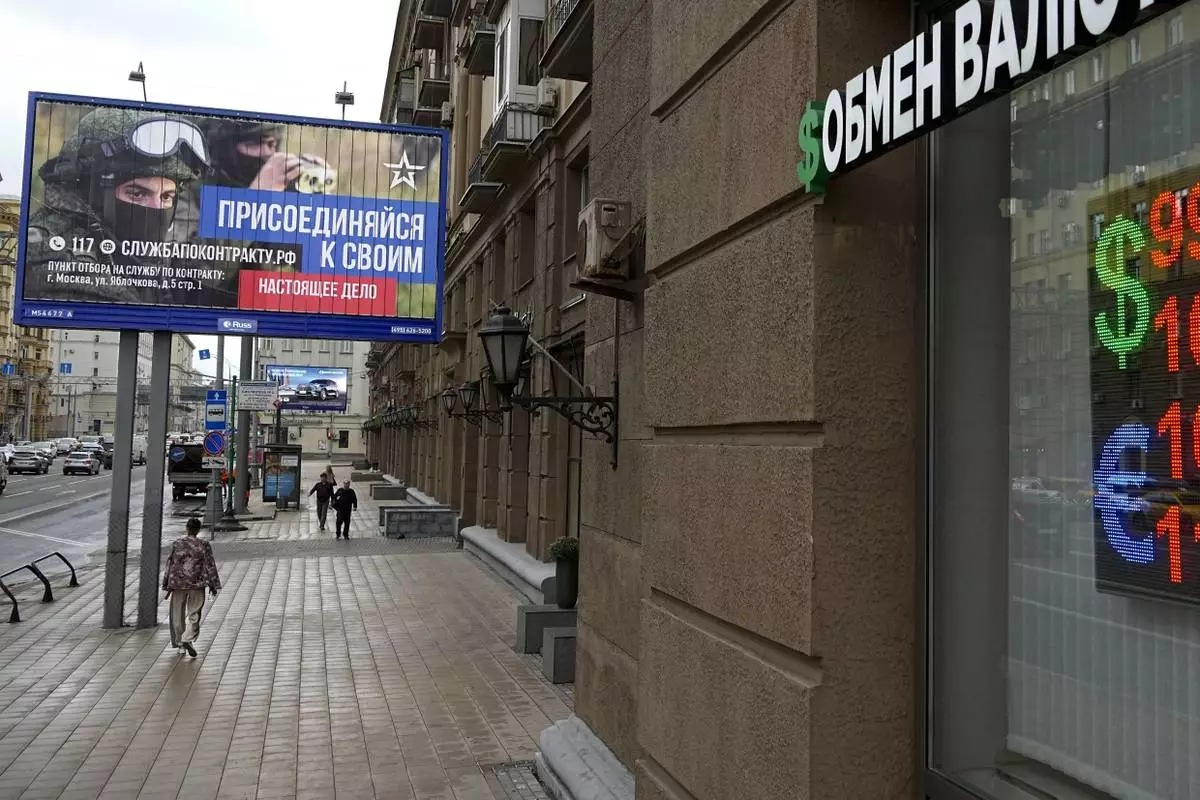
FILE - People walk past a currency exchange office with an army recruiting billboard calling for a contract for service in the Russian armed forces in Moscow, Russia,on Aug. 14, 2023. (AP Photo, File)
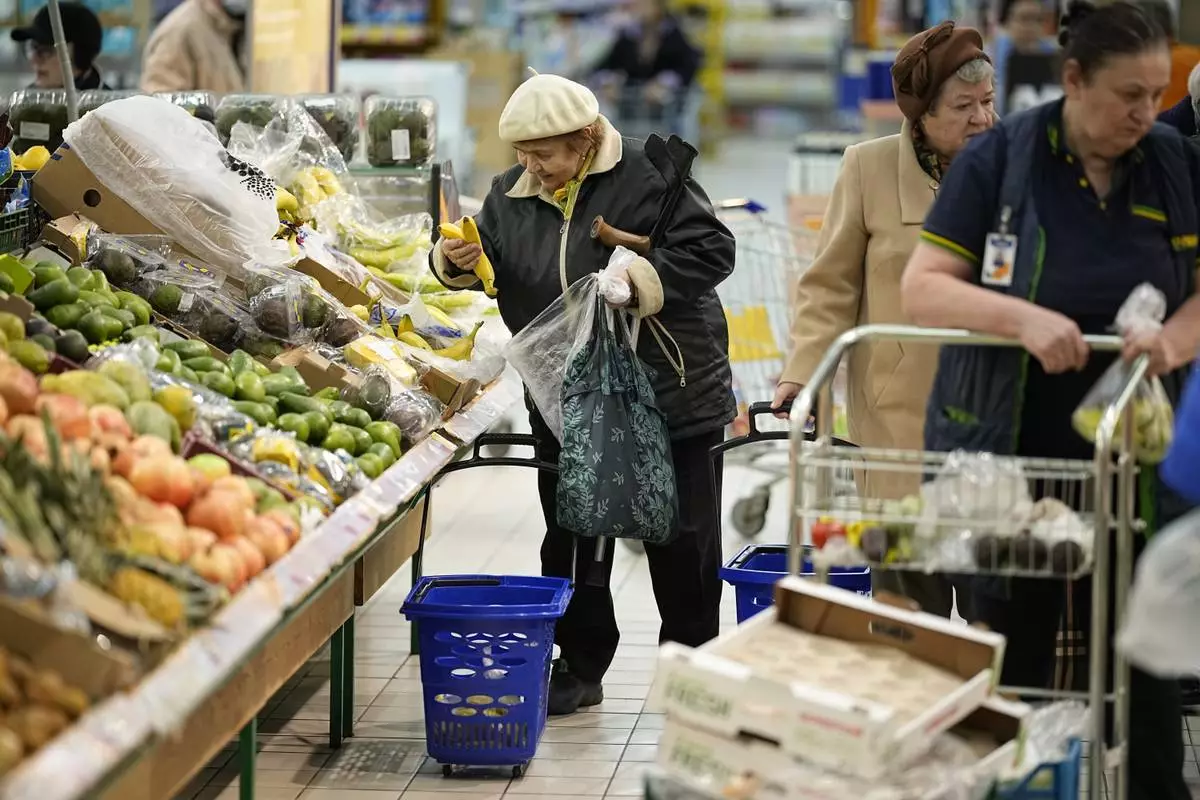
FILE - People buy fruits at a hypermarket in Moscow, Russia, on Nov. 3, 2023. (AP Photo, File)






